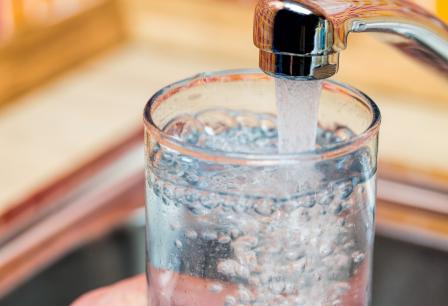Identifying the Best Lead Sampling Techniques to Protect Public Health
Published October 22, 2018
 If lead is found in drinking water, it is important to identify where it is coming from within the water system--that means taking samples at every stage, from the distribution system all the way to the plumbing system inside the home, also known as premise plumbing.
If lead is found in drinking water, it is important to identify where it is coming from within the water system--that means taking samples at every stage, from the distribution system all the way to the plumbing system inside the home, also known as premise plumbing.
There are many types of sampling techniques available to assess the presence of lead in drinking water. Deciding which one to use depends on what the objective is. Different sampling tools can be used to assess lead exposure, evaluate corrosion treatment effectiveness for different plumbing materials, or identify particularly significant lead contributors that can be removed to mitigate the problem.
A water utility may implement regulatory sampling protocols to meet a trigger or standard - the level above which the water system must take an action. Regulatory sampling isn’t meant to diagnose lead sources or assess the risk of lead exposure in an individual residence. However, many utilities do sample drinking water for lead beyond the regulatory requirements to better help identify sources of lead, improve corrosion control treatment, and to inform the public of their risk of exposure.
EPA researchers have identified several sampling protocols to help water utilities assess and mitigate the risk of lead exposure. These techniques fall under two categories--diagnostic water sampling and exposure sampling.
The first technique, diagnostic water sampling, provides a picture of potential lead release in a home’s plumbing. This sampling protocol includes a defined stagnation time and defined volumes. It is based on the principle that water samples of a particular volume represent the distance that water travels through the plumbing system. For example, a smaller sample volume provides information about water quality that has travelled a short distance in the home’s premise plumbing system, while a larger volume sample provides information about water that has traveled a longer distance. It’s important to collect samples of varying volumes, while accurately mapping the volumes, in order to properly identify the potential sources of lead within a home. Long-term sequential sampling taken with the same protocol can help determine treatment effectiveness on individual lead sources in the home.
The second technique, exposure sampling, attempts to capture the amount of lead people could consume by drinking, cooking, or preparing food and beverages with the home’s water. Two different approaches to exposure sampling can be used to assess water lead exposure, either at an individual household level or at the community-wide level.
To assess community-wide exposure, researchers can use water quality zone-based random day-time (RDT) sampling. For this technique, samples are collected randomly at enough residences during daytime hours to statistically reflect exposure across a community.
To assess exposure at the individual household level, researchers used side-stream sampling devices and composite samplers. These devices are placed at the point of use, for example, under a kitchen sink. Each time the faucet is turned on, the device diverts a small amount of water to a sample bottle. Once the bottle is full, the sample would be analyzed for lead.
This research shows that there are different sampling techniques beyond the regulatory sampling protocols that can be applied to reach a specific objective, and each can be implemented to solve specific lead-related drinking water issues within a water system.
Learn more:
